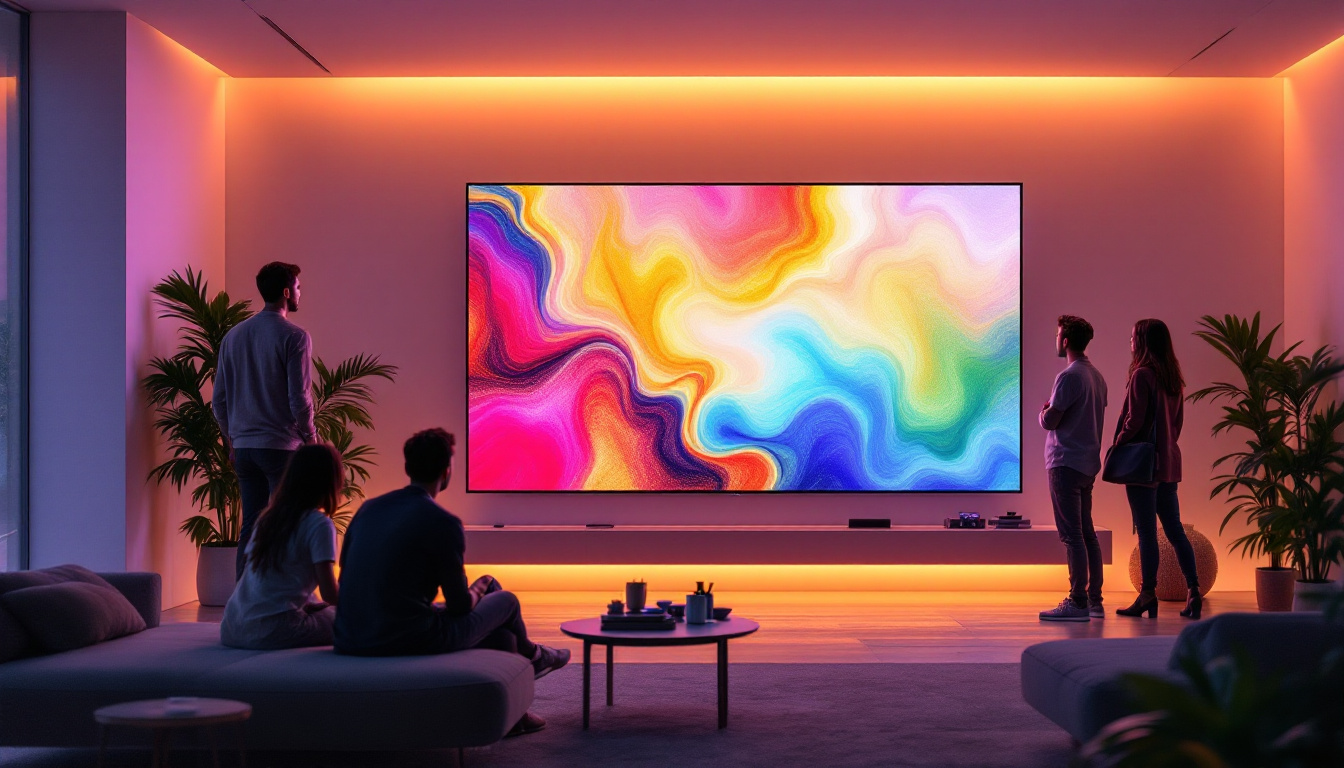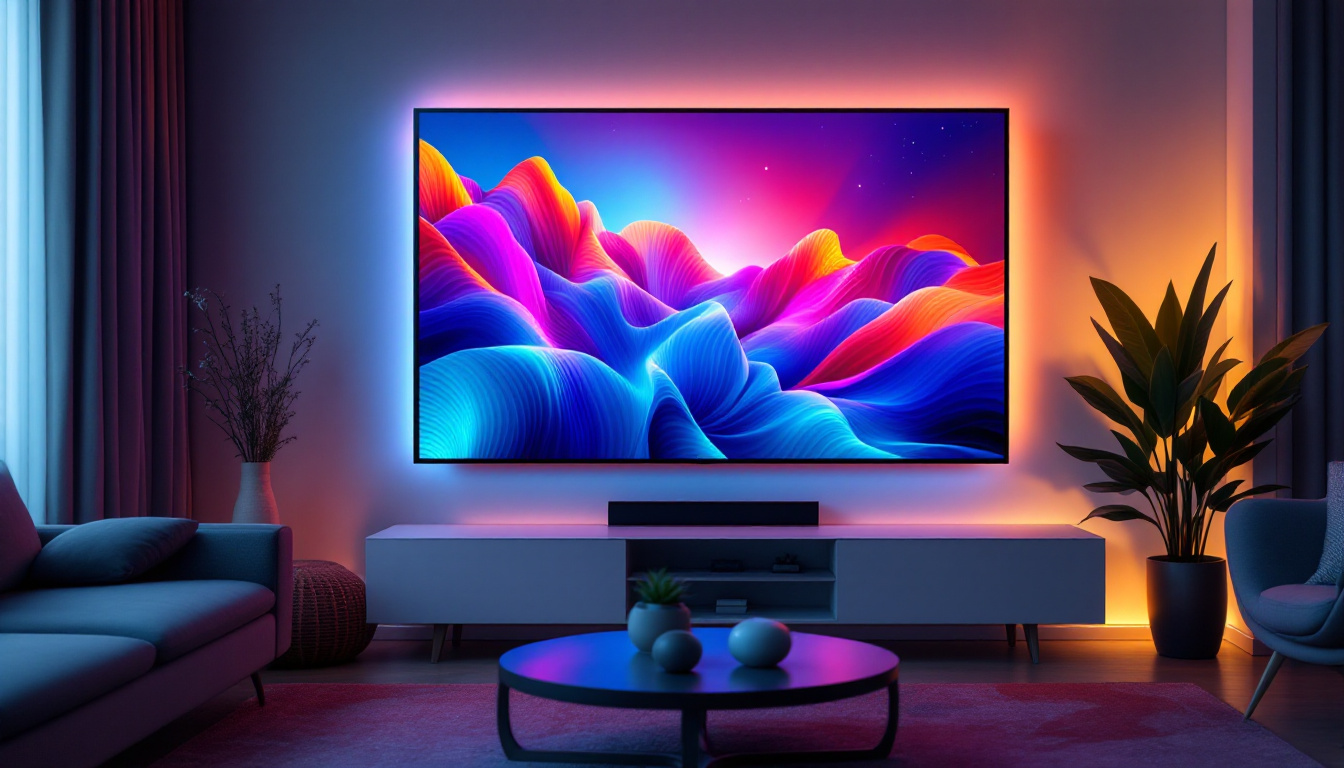In the world of display technology, two terms frequently come up: LCD and LED. While many people use these terms interchangeably, they refer to different technologies that serve distinct purposes. Understanding the differences between LCD and LED displays is essential for making informed choices when purchasing a television, monitor, or any other display device. This article will delve into the intricacies of LCD and LED technologies, comparing their features, advantages, and applications.
Understanding LCD Technology
Liquid Crystal Display (LCD) technology has been a staple in the display industry for several decades. It utilizes liquid crystals to modulate light and create images. LCDs are known for their thin profile and energy efficiency, making them popular for a wide range of applications, from televisions to computer monitors.
How LCD Works
At the core of an LCD is a layer of liquid crystals sandwiched between two polarizing filters. When an electric current is applied, the liquid crystals align in such a way that they either block or allow light to pass through. This manipulation of light creates the images seen on the screen. However, LCDs require a backlight since they do not emit light on their own.
The backlight is typically provided by fluorescent lamps or LED lights, which illuminate the liquid crystals. This is where the distinction between traditional LCDs and LED-backlit LCDs comes into play. While both are technically LCDs, the latter offers improved brightness, contrast, and energy efficiency. LED-backlit LCDs can also achieve a wider color gamut, making them more suitable for high-definition content and gaming, where vibrant colors and deep blacks are essential for an immersive experience.
Advantages of LCD Displays
LCD displays offer several advantages that contribute to their widespread use. Firstly, they are generally more affordable than their LED counterparts, making them accessible for budget-conscious consumers. Additionally, LCDs tend to have excellent color accuracy and are capable of producing sharp images, which is essential for tasks like graphic design and photo editing.
Another significant benefit is their lightweight and slim design. This makes LCDs easy to mount on walls or fit into tight spaces, providing flexibility in various settings. Furthermore, LCDs have a lower power consumption compared to older display technologies, contributing to energy savings over time. Their durability is also noteworthy; LCDs are less prone to screen burn-in, a common issue with older CRT displays and some OLED screens, allowing them to maintain image quality over extended use. This resilience, combined with their affordability, makes LCDs a preferred choice for many educational institutions and businesses that require reliable display solutions for everyday use.
Moreover, the versatility of LCD technology extends beyond traditional screens. It has been adapted for use in various devices, including smartphones, tablets, and even smartwatches. The advancements in LCD technology have led to the development of specialized types, such as IPS (In-Plane Switching) panels, which offer wider viewing angles and better color reproduction, making them ideal for collaborative work environments. As technology continues to evolve, LCDs remain at the forefront, continually adapting to meet the demands of modern users while providing a balance of performance and affordability.
Exploring LED Technology
Light Emitting Diode (LED) technology has revolutionized the display industry in recent years. Unlike LCDs, LED displays use semiconductor technology to emit light directly. This fundamental difference allows LED displays to achieve higher brightness levels, better contrast, and more vibrant colors.
How LED Displays Work
LED displays operate using an array of tiny light-emitting diodes that create images by turning on and off in various combinations. There are two primary types of LED displays: direct-lit and edge-lit. Direct-lit LED displays have LEDs positioned behind the entire screen, providing uniform brightness across the display. In contrast, edge-lit LED displays have LEDs positioned around the edges, which can lead to variations in brightness and contrast.
Moreover, there are also OLED (Organic LED) displays, which take LED technology a step further. OLED displays use organic compounds that emit light when an electric current is applied. This technology allows for even thinner displays and better color reproduction, as each pixel can be turned on or off independently.
Advantages of LED Displays
LED displays come with a host of advantages that make them appealing to consumers and professionals alike. One of the most significant benefits is their superior energy efficiency. LED displays consume less power than traditional LCDs, which can lead to lower electricity bills and a reduced environmental footprint.
Additionally, LED displays offer enhanced brightness and contrast, resulting in more vivid images and deeper blacks. This is particularly important for viewing in bright environments, where traditional LCDs may struggle to maintain image quality. Furthermore, LED technology allows for thinner and lighter displays, making them ideal for modern aesthetics and portability.
Comparing LCD and LED Displays
While both LCD and LED displays have their merits, understanding their differences is crucial for making the right choice. Below is a comparison of key features that can help clarify which technology may be best suited for specific needs.
Image Quality
When it comes to image quality, LED displays generally outperform LCDs. The ability of LED displays to achieve higher brightness levels and better contrast ratios results in more vibrant and dynamic images. This is particularly noticeable in dark scenes, where LED displays can produce deeper blacks compared to traditional LCDs.
However, it’s important to note that not all LED displays are created equal. The quality of the LED backlighting and the panel technology used can significantly impact image quality. For instance, an edge-lit LED display may not perform as well as a high-quality direct-lit LED display.
Energy Efficiency
Energy efficiency is another critical factor to consider. LED displays are typically more energy-efficient than traditional LCDs, consuming less power while delivering superior performance. This efficiency translates to lower energy costs and a reduced environmental impact, making LED displays a more sustainable choice in the long run.
However, advancements in LCD technology, particularly with LED backlighting, have also improved the energy efficiency of LCDs. While they may still lag behind LED displays, modern LCDs are becoming increasingly competitive in this regard.
Cost Considerations
Cost is often a decisive factor for consumers when choosing between LCD and LED displays. Generally, traditional LCDs tend to be more affordable than LED displays, making them an attractive option for budget-conscious buyers. However, as LED technology continues to evolve and become more mainstream, the price gap is narrowing.
It’s also worth considering the long-term savings associated with LED displays. Although the initial investment may be higher, the energy savings and longer lifespan of LED displays can offset the upfront costs over time.
Applications of LCD and LED Displays
Both LCD and LED displays have found applications across various industries, each serving unique purposes based on their strengths. Understanding these applications can help consumers make informed decisions based on their specific needs.
LCD Display Applications
LCD displays are commonly used in a wide range of applications, including:
- Televisions: Many budget-friendly televisions utilize LCD technology, providing decent image quality for everyday viewing.
- Computer Monitors: LCD monitors are prevalent in office settings, offering good color accuracy and sharp images for productivity tasks.
- Mobile Devices: Many smartphones and tablets use LCD technology due to its cost-effectiveness and adequate performance.
Despite the rise of LED technology, LCD displays remain a popular choice for many consumers, particularly in budget-sensitive markets.
LED Display Applications
LED displays have gained traction in various sectors, including:
- High-End Televisions: Premium televisions often feature LED technology, providing superior image quality for cinema-like experiences.
- Outdoor Displays: LED displays are commonly used for billboards and signage due to their brightness and visibility in daylight.
- Professional Monitors: Graphic designers and video editors often prefer LED displays for their color accuracy and contrast, essential for creative work.
As technology continues to advance, the applications of LED displays are expanding, making them a versatile choice for various environments.
Future Trends in Display Technology
The display technology landscape is continually evolving, with new innovations on the horizon. As consumers become more discerning, manufacturers are striving to enhance image quality, energy efficiency, and overall performance.
Emerging Technologies
One of the most exciting developments in display technology is the rise of MicroLED and MiniLED displays. These technologies promise to combine the best features of both LCD and LED displays, offering superior brightness, contrast, and energy efficiency. MicroLED displays consist of tiny individual LEDs that can be turned on or off independently, allowing for exceptional image quality and flexibility in design.
MiniLED technology, on the other hand, utilizes smaller LEDs for backlighting, resulting in improved contrast and color performance. Both technologies are expected to play a significant role in the future of display technology, providing consumers with even more options.
Integration with Smart Technology
As smart technology continues to permeate our lives, displays are also evolving to integrate seamlessly with smart home systems. Smart TVs and monitors are becoming increasingly common, allowing users to access streaming services, control smart devices, and interact with voice assistants directly from their displays.
This integration is likely to enhance the user experience, making displays not just a medium for viewing content but also a hub for smart home control and connectivity.
Conclusion
In the battle of LCD versus LED, both technologies have their strengths and weaknesses. LCD displays remain a cost-effective choice for many consumers, while LED displays offer superior performance and energy efficiency. As technology continues to advance, consumers can expect even more options and innovations in the display market.
Ultimately, the choice between LCD and LED will depend on individual needs, preferences, and budget. By understanding the differences between these technologies, consumers can make informed decisions that best suit their requirements, ensuring a satisfying viewing experience for years to come.
Discover Cutting-Edge LED Displays with LumenMatrix
As you consider the advantages of LED technology for your display needs, LumenMatrix stands at the forefront of innovation, ready to illuminate your space with the most advanced LED display modules. Whether you’re looking for an Indoor LED Wall Display, a vibrant Outdoor LED Wall Display, or specialized solutions like Vehicle LED Displays and LED Sports Displays, LumenMatrix has the expertise to bring your vision to life. Our mission is to transform your visual communication, engaging your audience with clarity and impact. Don’t settle for less—check out LumenMatrix LED Display Solutions today and experience the future of display technology.































